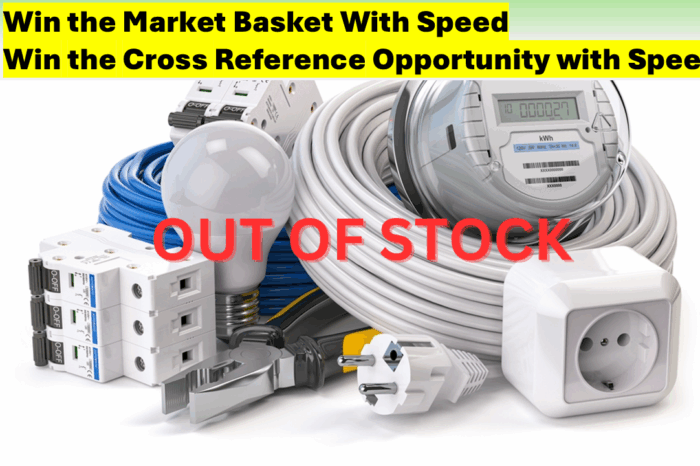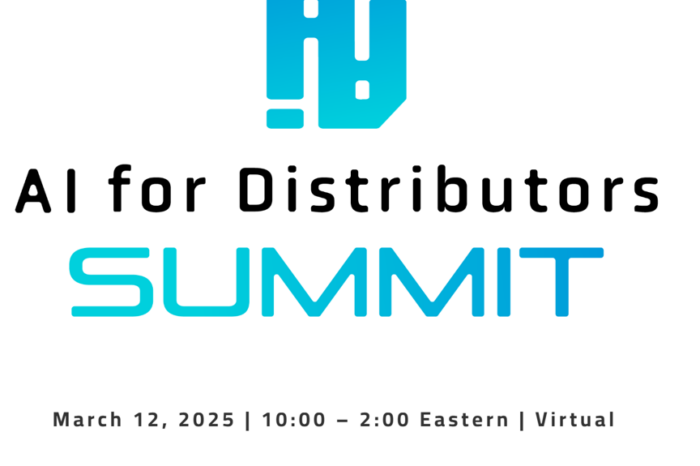How technology can change your business?
“What’s in it for me?”
Over the years we all ask that question, especially when it comes to making decisions about our ERP software systems. Since most ERP’s at the order entry stage essentially perform the same function, we started asking around to the technology and software companies about what will become the game changers for distributors to understand in the near future.
ElectricalTrends‘ Tech Vision Series
We are reaching out to companies like Microsoft, Oracle, SAP, INFOR, DDI, Epicor, I.B.I.S. Inc, and Apple to name a few. No doubt you may have someone else you might like us to reach out to. If you send us the contact information we’ll reach out to them with the same question “what are the three major technology changes you (they) see from their company that will help a distributor grow their business or run it more efficiently?”
 The first one received is from Matt Petersen, US Dynamics Industry Director, Retail and Distribution, at Microsoft with three technologies named “Personal Digital Assistants”, “Predictive Analytics/Machine Learning” and “Pervasive, Integrated Communication”.
The first one received is from Matt Petersen, US Dynamics Industry Director, Retail and Distribution, at Microsoft with three technologies named “Personal Digital Assistants”, “Predictive Analytics/Machine Learning” and “Pervasive, Integrated Communication”.
New technologies continue to emerge at an ever-increasing pace. The problem is understanding how to make the best use of them to have the most impact on your business. In this posting, I’m going to share three new technologies that have the potential to have a big impact on your business in the months and years to come.
1. Personal Digital Assistants (Cortana, Siri, Google Now)
This voice-interactive technology has been around for a couple of years now, mostly on phones and tablets. What is interesting for distributors, though, is now this technology is becoming more pervasive showing up on all kinds of devices and even business systems like CRM and ERP systems. The benefits of hands free voice interaction are clear, but what is really exciting is the fact that some of these, like Cortana, for example, learn from your historical interaction and preferences to give an even more personalized experience.
Commands like “CRM: Add that call to the Contoso account:” mean that sales people will now actually log their calls into the CRM system. CRM contact lists are now available from anywhere using commands like “CRM: Remind me to call Milton Waddams from Initech about the lighting quote for Johnsons tomorrow morning:” mean that follow-up calls are more likely to not only be made, but also to be recorded in CRM.
The benefit … sales follow-up and the possibility for better sales management.
These scenarios exist today in CRM, and will be coming to other mobilized systems like ERP in the near future.
Check out one example here: CRM and Cortana
2. Predictive Analytics and Machine Learning
Big Data has been a buzzword for a while now, but the problems have been – what to do with it? And how to make sense of it all?
Machine learning is a cloud based technology that allows companies to load historical data such as sales, weather patterns, and other factors, and allow the system to “learn” and “predict” future behaviors. This might be applied to inventory stocking levels, future customer behaviors, or profitable price points.
This technology exists today and is being used to determine what the customer is most likely to buy and presenting options to the customer in a real-time cross-sell and up-sell environment. By knowing what the customer is likely to buy and presenting it to him at checkout, both sales and margin have been shown to improve dramatically.
Check out some examples of how Machine Learning are increasing Omni-Channel sales here: Analytics and here: Machine Learning
3. Pervasive, Integrated Communication (Skype, WhatsApp)
Distributors traditionally communicate within their organization and with their customers using the phone, email, text, and sometimes even fax. Sales and support staff choose these options because they’re quick and familiar. The problem with these types of communication, though, is that they are disconnected from the rest of your business processes. Some work has been done recently to integrate phone, chat, and email systems into CRM and support systems, but it’s still not quite as good as it needs to be. New communication tools allow agents / staff (i.e. inside sales, product specialists, etc) (or other employees for internal calls) to automatically see whether their contact is free or busy prior to initiating a chat, call, or video call. Then, with one click, the connection is made and you can communicate from speech to text, text to speech, and even from one spoken language, like English, to another, like Spanish.
This is more than just offering the opportunity for the customer to communicate via chat, although that is a step up. It allows distributors, their customers, and their suppliers to all act and communicate seamlessly as a part of their business process. Think about having all of the contacts in your ecosystem … or even relating to a lighting / gear project … from estimator to distributor to the factory … connected. Would it help project management / communications? Would it be a differentiator to create customer and supplier “partnerships?”
Check out this video that combines a lot of what I mentioned in this blog: Pervasive Communication
Be sure to keep these technologies in mind when evaluating opportunities for improvement within your distribution organization.
If you’d like to learn more about these technologies and Microsoft’s vision for supporting distributors, click here to contact Matt Petersen.
“Tomorrow’s” distributors will be investing more in technology than ever before (and maybe cumulatively have ever spent.) Technology is evolving from solely an ERP system, network infrastructure and PCs / laptops / tablets to now include VoIP phones, smartphones, apps, security, eCommerce, eMarketing tools, WMS, routing and an array of customer service and business analytics tools to name a few. Nowadays, if you can conceive a process there is probably a technological way to execute or enhance it. Distribution management needs to be knowledgeable about these capabilities to spot opportunities. The traditional role of IT is changing as every “consumer” can now contribute technology ideas as we interact with them daily.
Our goal through this Technology Vision Series is to have ideas presented to you that you can consider as your business evolves. Either connect to a company’s vision or decide to have a “best of breed” approach as technology changes will come quicker (and it can help accelerate revenue and / or optimize profitability.) The key then becomes … execution.
What would you like to know from these companies? What “vision” have you seen from them? What do you think of Microsoft’s customer service and profitability services to further empower your business?






















